Review: Wild Asparagus, Wild Strawberries. Two Years In France. By Barbara Santich. Published by Wakefield Press.
Barbara Santich’s lifelong love affair with food history was born out of a two-year sojourn in France in the 1970s, an experience she looks back fondly on as having left an indelible imprint. “I drank Normandy farmhouse cider, ate strawberries dipped in red wine then sugar, and tasted truffles and soft goat cheeses for the first time. I returned to Australia inspired to become a food writer,” says the food historian and author of a string of books, including Bold Palates: Australia’s Gastronomic Heritage and In The Land of the Magic Pudding.
Wild Asparagus, Wild Strawberries is an account of those magical two years spent with husband John and toddler twins Stephanie and Dylan, first in Languedoc, then in Provence and finally in the north of France where John finds work with the Université de Compiegne. Santich first had a taste of France as a student in the early 1970s and had vowed to return, not letting the arrival of twins get in the way.
Having worked briefly as a food writer under Margaret Fulton at Woman’s Day, she took a $30 secondhand typewriter with her when she left for France with the family in 1977. “France would inspire me to follow in the footsteps of Elizabeth David,” she says in this delightful memoir. Presumably she kept copious notes which allowed her to produce such a good read all these decades later.
Buoyed by naïve enthusiasm, Santich and her husband launch themselves into French village life, a world of winemaking, rabbit raising, cherry picking, chestnuts at Christmas, and exuberant 14 July celebrations. They buy a 1968 Citroen DS and settle in Nizas, a village where “children are as rare as diamonds”. They rent a house called l’Escoute from the rosy-cheeked and motherly Madame Molla who becomes their guide to life in Nizas.
Living by the rhythm of the seasons
This timeless village in Languedoc offers a glimpse into medieval times, where life is simple and the church and the mairie (town hall) are central to village life. The inhabitants still live by the rhythm of the seasons and follow customs inherited from earlier generations. What people don’t produce at home or buy from the general store is brought to the village by itinerant merchants.
Shepherds still lead their flocks to pasture each day and, even near bustling towns, wild strawberries hide at the forest’s edge. Food is central to the family’s experience. Their gastronomic explorations of the French countryside and Santich’s attempts to cook like a local add colour to every chapter, accompanied by recipes for dishes mastered.
The butcher tut-tuts about Santich’s cooking prowess, but her quest to find a library with cookbooks that might help is thwarted. “A library having cookbooks is inconceivable. Everyone has their own cookbooks. Why on earth would they want to borrow a different one?” Increasingly, Santich begins to appreciate the subtleties of quality in French food, and her career as a food writer begins to take off too. She has an article on rabbit accepted by Australian Gourmet, for which she is paid the princely sum of $30, and soon she is a regular contributor.
The Provencal town of Caromb where the family settles next is a modern metropolis in comparison with Nizas, offering another perspective on regional France. But when the summer holidaymakers arrive, the family is forced to take a new apartment in the village of Claret, north of Montpellier, where new friendships are forged.
When John lands a job in Compiegne, in northern France, Santich finds the food very different from the south. “Bread is lighter, pastries creamier, more buttery, more varied. The goat cheeses of Provence give way to a vast diversity of soft white mould cheeses made from cows’ milk. … In the heart of town the unmistakable aroma of Normandy and its cheeses wafts from the creameries and the warm fragrance of just-baked pains au chocolat fills the afternoon air, just in time for the final school bell.”
In many ways, Wild Asparagus, Wild Strawberries is the story of a France that has been lost to time. Santich has returned to France many times since that lengthy sojourn, and she still has a deep and abiding passion for the country. But she is wistful for the France that she experienced in the 1970s and recognizes what a special experience it was. “I was privileged to have lived there at a time when the 19th century almost touched hands with the 21st,” she says.
Buy your copy of Wild Asparagus, Wild Strawberries. Two Years In France. from Book Depository now, with free delivery worldwide

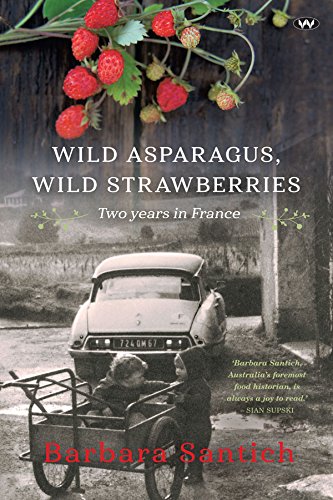
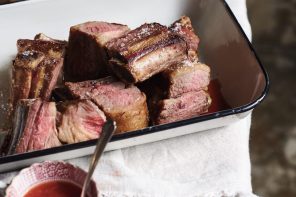
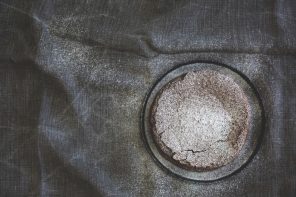
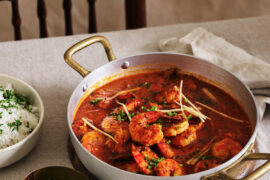
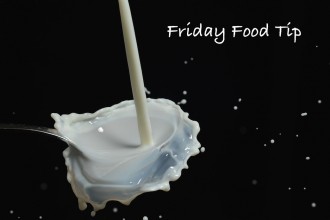
Interesting how nostalgia and personal perspective can shape a description of a particular place or period. I also spent a lot of time in France in the 70s and remember it as a political hotbed, running over with revolutionary ideas, intellectually inspiring, drawing on philosophy to understand the social, moral and political challenges of the day. And I never once ate wild strawberries or asparagus!